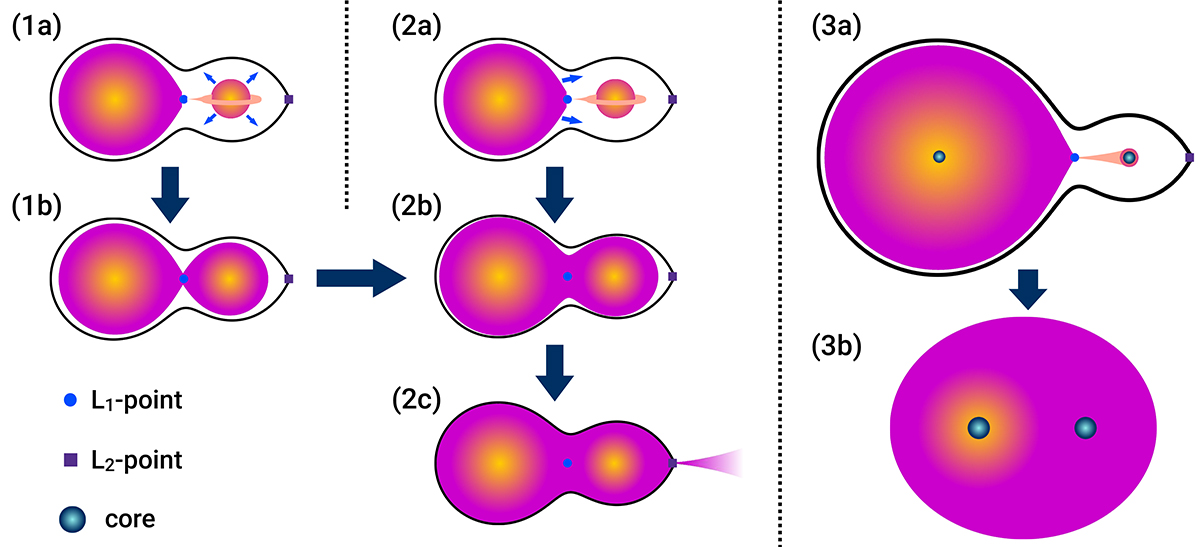Fig. 2.

Download original image
Schematic representation of the physical mechanisms leading to contact (not to scale). The filled blue circles and purple squares indicate the position of the L1- and L2-points, respectively. The filled grey-blue circles represent the stellar cores in panels 3a and 3b. Panel 1a shows the expansion of the accretor leading to a contact binary (1b). This corresponds to the ‘Accretor expansion’ mechanism described in Sect. 3.1. Subsequent overfilling of the components’ Roche lobes leads to the formation of an overcontact binary (2b). The primary increasingly overfills its Roche lobe (2a) and can eventually fill the secondary’s Roche lobe (2b). This can eventually lead to L2-overflow (2c), which likely results in a stellar merger. The scenarios (1b–2b–2c) and (2a–2b–2c) correspond to the ‘L2-overflow’ mechanism described in Sect. 3.3. In panel 3a, runaway mass transfer from a (super-)giant (left) to an MS star (right) leads to the onset of a classical common-envelope phase 3b, where the cores of both stars revolve in the (super-)giant’s envelope. This corresponds to the ‘Runaway MT’ mechanism described in Sect. 3.5.
Current usage metrics show cumulative count of Article Views (full-text article views including HTML views, PDF and ePub downloads, according to the available data) and Abstracts Views on Vision4Press platform.
Data correspond to usage on the plateform after 2015. The current usage metrics is available 48-96 hours after online publication and is updated daily on week days.
Initial download of the metrics may take a while.


